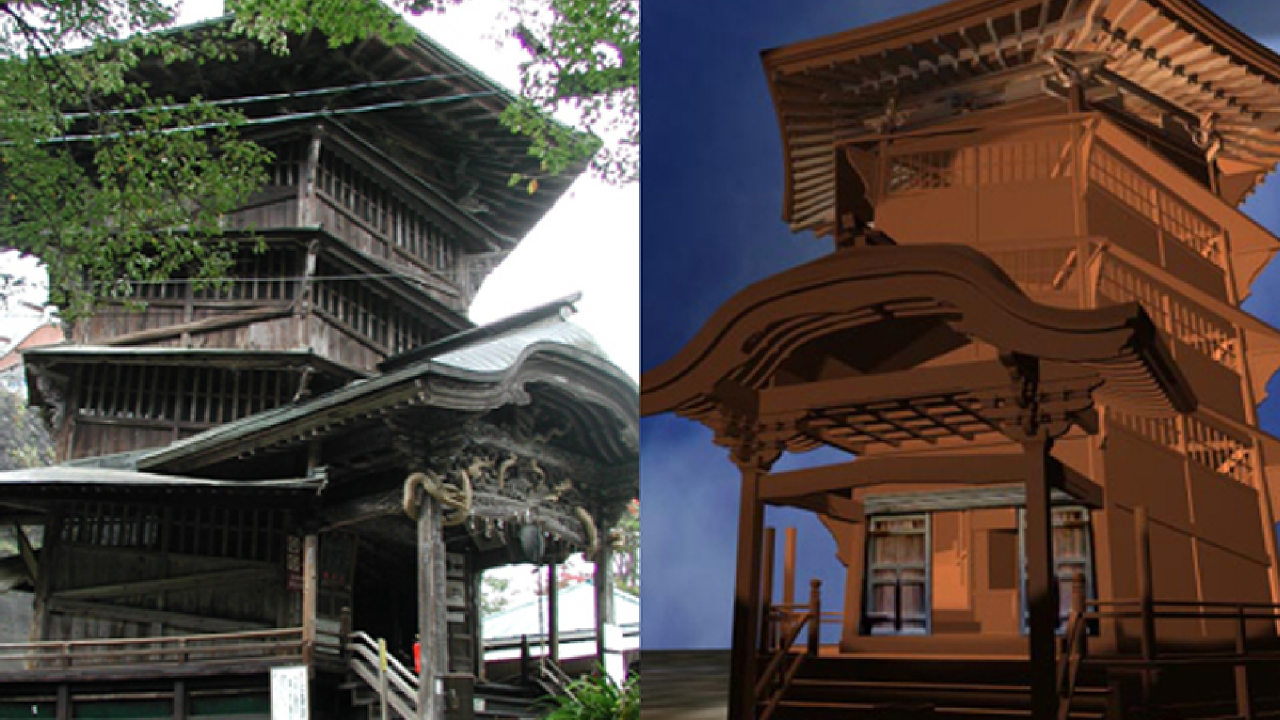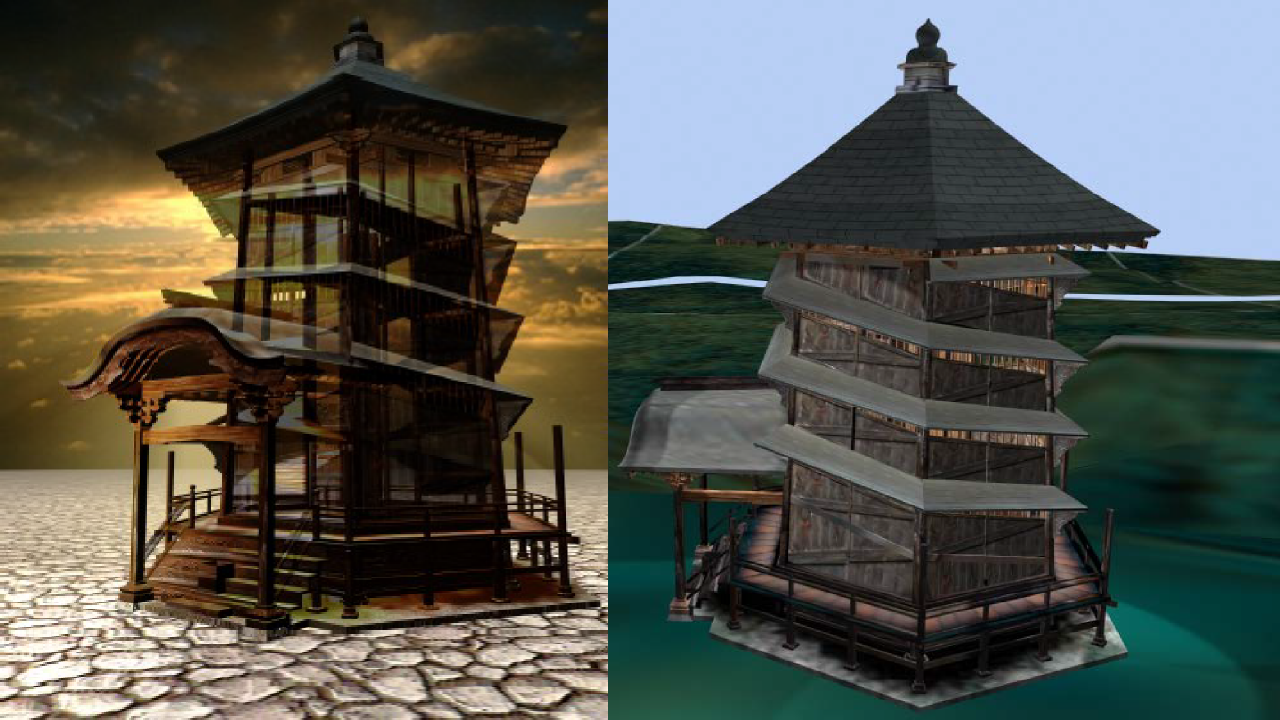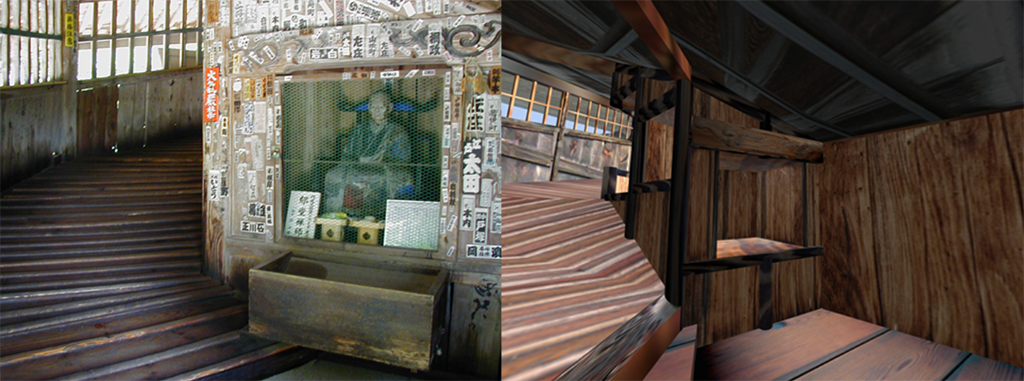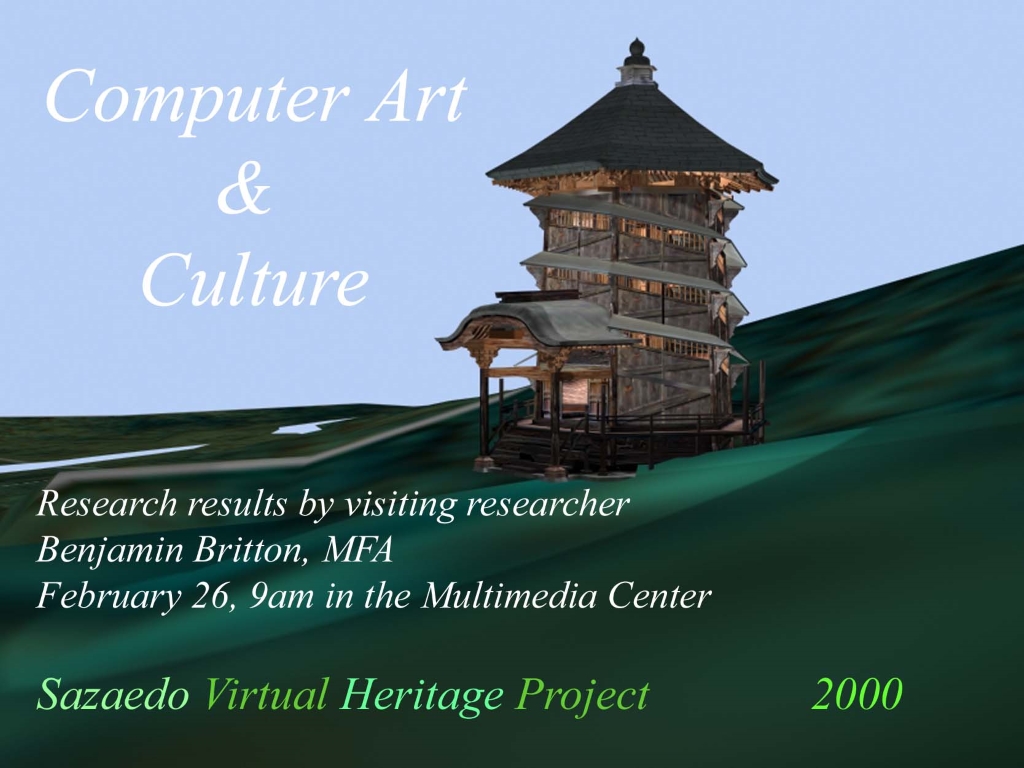
This virtual reality reconstruction of an ancient Japanese temple was done to memorialize and share the cultural legacy of the unique architecture and history of the temple. Built in a double-helix design, the temple is practically unique among Buddhist shrine structures in Japan; one enters through the front door, walks upward on the sloping, spiraling floor, until reaching the top, then crosses a small bridge at the top, descending downwards on the spiraling rampway, and exiting out the back door of the temple. |

It is a mysterious experience, because you literally never go out the way you came in, you enter through the front and exit through the back. Those who are ascending can hear, but not see, those who are descending. At the top, one experiences a peculiar transition, one becomes something different; a person who has ascended and who is returning unseen by those who still climb upward. The temple has numerous shrines containing sculptural dioramas of famous Japanese buddhist saints (my interpretation).
Sazaedo is extremely important in Japanese history, being the site where the Byakottai, young Samurai novices, lost their lives during a seige of Aizu-Wakamatsu Castle during the struggles at the end of the era of the Shoguns. |

Provided by my hosts at Aizu-Wakamatsu University with an Autocad model of Sazaedo, I spent the summer, Fall, and Winter optimizing the model for realtime display and texture mapping it with original photographs that I shot on location at the temple. Over time, I became more familiar with the site, the town, its colorful history, and its friendly residents. |

The final product of my work was a presentation to the President of University of Aizu, his faculty and staff, of the virtual reality temple exhibited in a headmounted video display and on large-screen video projection, and a synopsis of research lessons learned, including technical production methods and a big-picture personal analysis of the state-of-the-art in 3d-modeling, realtime digital simulation, and virtual reality. |

The finished VR model, made for the University of Aizu under the terms of GNU licensing,
will be useful for creative research and the future of cultural preservation, which is an important
priority for the University of Aizu. It was a very great honor to serve as a Visiting Professor of Art,
and although it was hard to travel back and forth to Japan throughout the eight-month residency,
it was an indescribable educational experience for me. |